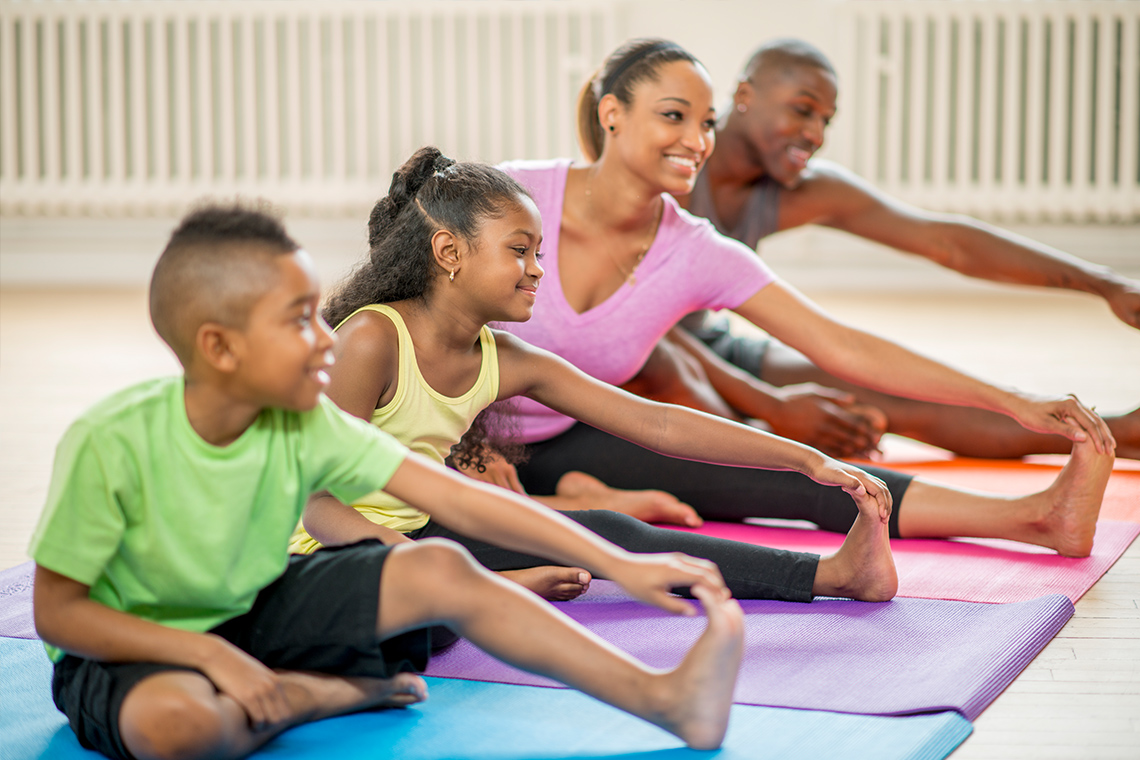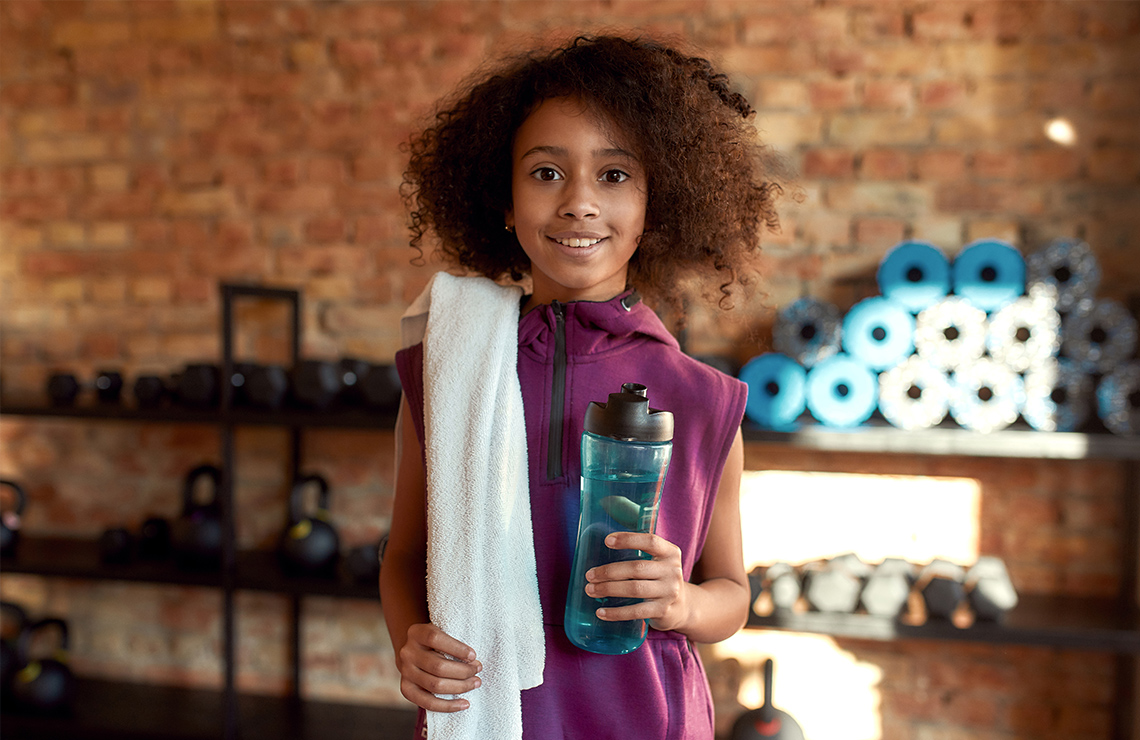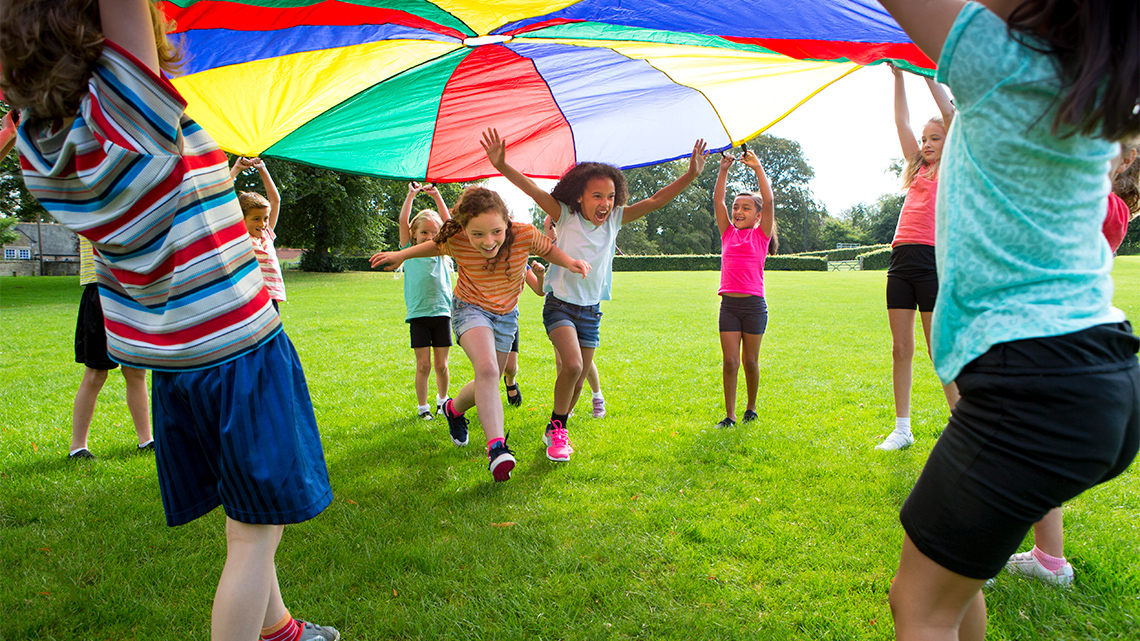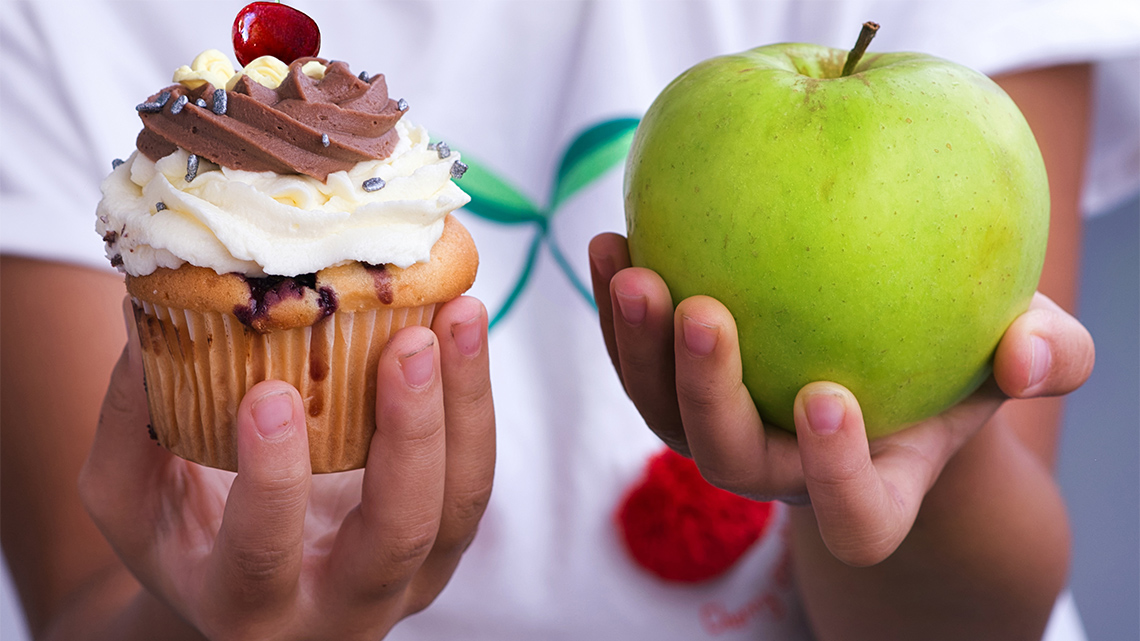Minds On
Children’s health
In this learning activity, we are going to learn how to conduct research. For the purpose of this exercise, let's focus on the theme of Health and Well-Being. You can use images to inspire you to think critically about a topic or even narrow your research focus. Below there are 3 images of children participating in making healthy choices. Brainstorm possible research topics for each image that you could explore.
Action
Health

Brainstorm
Health and well-being topics
Here are some health and well-being topics to consider:
- ways we can monitor and take care of our health
- making time to connect with family and friends
- mindfulness activities and strategies
- getting involved in your community
- setting personal goals
- learning to balance screen use with other activities
KWHLAQ for health (or health topic)
Access the following fillable and printable KWHLAQ Chart and fill in the first 3 columns about your health topic. Try to create as many questions as possible regarding your health topic.
Things to include in your chart:
- 1st column: In the What I Think I Know column, include what you learned and/or already knew about your topic.
- 2nd column: In the What I Want to Know/Learn column, ask questions that you would like to find out more about in your research. Try to include easy to look up questions like the 5Ws and 1H, as well as higher order questions that relate to cause and effect like WHY or HOW. Ask for feedback from someone in your family about your questions.
- 3rd column: In the How I Will Find Out column, you can ask questions about how to find out more information to help you answer your questions in the 2nd column.
Plan for finding information (sources)
Using your ideas in the “How do I find out?” column of your KWHLAQ chart, make a plan for how you’re going to locate information.
- What search sites will you use?
- What online search databases are available in your school/school board library?
- Will you use your public library search engine?
- Will you interview an expert? An expert could be someone who has reliable knowledge on a specific subject like a teacher or a family member
- Will you consult magazines, news broadcasts or podcasts?
Add your ideas to the How do I find out? column of your KWHLAQ chart.
Searching using keywords

Part of research is to search for information to help answer your research question(s). Searching for information is done using keywords.
Brainstorm
Keyword list
Brainstorm some important words or keywords that might be related to your topic and research questions (in the 2nd column of your KWHLAQ chart). Make a keyword list. Keywords help narrow our searches to find the information we are looking for. Keywords can be a single word, two words or a phrase that are part of your research topic or that you think will help answer your research questions.
Search with your keywords
Now, try doing a search with your keywords and/or phrases in your KEYWORD LIST. Scan the search results shown in your web browser. Did the search results seem to have the kinds of websites and relevant information you were looking for? Pick one adult-approved website link to open in a new tab in the browser window so that you can return to your search results.
Complete Website Approval Checklist in your notebook or using the following fillable and printable document.
Website Approval Checklist
Relevance
Scan or Skim
Can I read this?
Answer my research questions?
Credibility
Check with your teacher before you record a site and bookmark
Repeat checklist steps with review if it’s a suitable source
Press the ‘Activity’ button to access Website Approval Checklist.
Review
You may need to go back and do more searches to find new or more specifics like supporting details (more facts, more examples, or you may need more sources to check your facts).
Some things you may want to reflect on depending on the topic you have chosen:
How do your passions, interests, relationship contribute to keeping you happy and healthy? Where are some areas that you have control to change? Do you think you’re making the best healthy decisions for your emotional, physical and mental health? Who can you go to for support to help guide and advise you?
If you’re not sure, use the Internet to do some research. You can also ask a family member, friend, or trusted adult (e.g., your teacher, guidance counsellor, or family doctor) for support.
Consolidation
Take action!

Now that you have conducted your research, return to your KWHLAQ chart, record your research in the L column (What I learned) to demonstrate what you have learned. If possible, conference with a partner, or independently decide 1 or 2 actions you will take next. Record your points in the A column (Actions) using a method of your choice. You can use the following questions to guide your discussion:
- What changes can you make in your daily life based on what you have learned in your research?
- How can you go about making these changes to add them into your daily life?
Think about the ways that you could present your research? What is the best way you could share what you have learned?
Reflection
As you read through these descriptions, which sentence best describes how you are feeling about your understanding of this learning activity? Press the button that is beside this sentence.
I feel…
Now, record your ideas using a voice recorder, speech-to-text, or writing tool.



